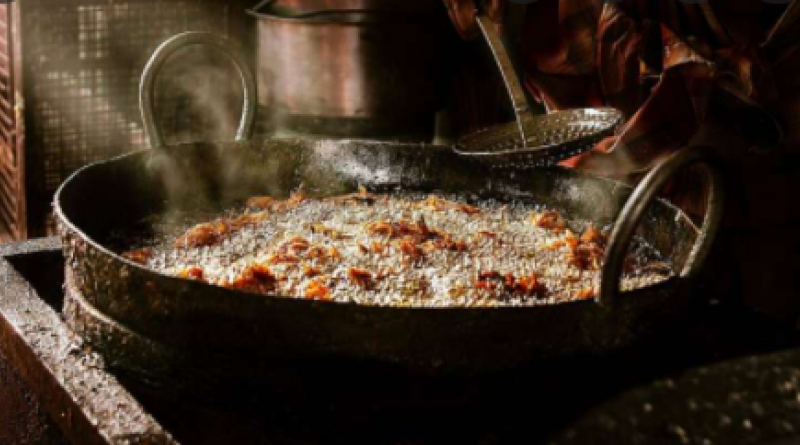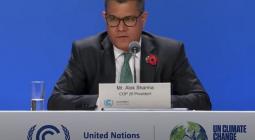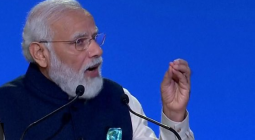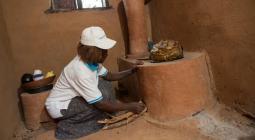Renewable energy offers immediate solution to India’s persistent clean cooking challenge

Leapfrogging over major investment in gas imports
India has made considerable progress in the transition to clean cooking. But close to 35% of the population continues to depend on firewood, wood chips, crop residue, dung cakes and other polluting solid fuels for cooking, which are hazardous to health and the environment.
In the immediate term, with 99.99% of households electrified and 92.02% with a liquefied petroleum gas (LPG) or piped natural gas (PNG) connection as of 2020, there are important choices to be made.
The government intends to increase penetration of clean cooking by shifting ongoing urban LPG consumers to PNG which would free up distribution of LPG for rural households. This strategy, however, keeps India dependent on expensive fossil fuel imports and is counterproductive to the goal of becoming an energy-independent nation.
It also demands huge investment in building transportation and distribution networks of gas pipelines. Further, it would take a decade to completely execute this strategy because the government plans to increase the coverage of city gas distribution (CGD) networks for the supply of PNG and compressed natural gas (CNG) from 20% to 70% of the population.
Renewable energy, on the other hand, offers the most feasible – and sustainable – option for increasing access to clean cooking. Renewable energy cooking solutions include solar cookers, biogas stoves, mini-grids and solar home systems (SHS). The main hurdles to adoption are the high upfront costs and lack of awareness, both of which can be addressed with the right government programmes.
Easing the transition to electric cooking
Various studies have shown that utilising renewable energy for cooking is cost effective over the long term and higher usage yields more economical results. The total annual cost of a biogas digester is lower as a result of its long life and free access to fuel. Similarly, utilising solar hybrid mini-grids for cooking can stimulate demand and bring the grid above the break-even tariff of US$0.40/kWh from the ongoing tariff of US$3/kWh. (At US$3/kWh, only 2-5 kWh of electricity per household per month is utilised from the grid, for LED lights and to charge phones). Using higher powered SHS can help increase the adoption of induction cookstoves which can ease the transition to grid-connected electric cooking in the long run.
The adoption of renewable energy for cooking needs to be implemented urgently. The average rural coverage of clean cooking fuels (electricity, LPG/PNG and biogas) continues to be low at 56.5% in 22 states/Union Territories. Moreover, the country-wide high LPG coverage estimated at 99.8% in 2021 has failed to translate to LPG being the primary cooking fuel for all households due to the high cost of refuelling and the inconvenience of transporting heavy LPG cylinders. This is especially the case in rural areas where households then continue to depend on solid fuels.
Using renewable energy for cooking also helps ease the transition to electric cooking. In the long term, electric cooking offers a viable and environmentally friendly alternative that is aligned with the wider trend in the developed world of an aggressive shift to electric cooking. In the United States, 63% of households use electricity for cooking. The World Bank also finds merit in electric cooking particularly in relation to meeting the Sustainable Development Goal on universal access to affordable and clean energy (SDG7).
India’s advantage in switching to electric cooking is that, at close to 100% electrification, preliminary infrastructure for providing connections is far ahead of that for PNG or LPG distribution.
The main hindrance to grid-connected electric cooking is the lack of reliable supply, which in turn reduces willingness to pay for electricity. Before any proposed major switch to electric cooking, a stable connected load has to be established. This is a long-term goal which is totally achievable for India with planned improvement in the electricity sector. Until then, the government should encourage the use of distributed renewable energy systems for electricity and cooking.
Most of these renewable energy systems are versatile – as well as being used for clean cooking they can also meet heating and lighting needs. CEEW’s 2019 Roadmap for Access to Clean Cooking Energy in India recommends using targeted subsidies, awareness campaigns and engaging local entrepreneurs as some of the ways to increase the access to and adoption of clean cooking in India.
Renewable energy provides an affordable and immediate solution to India’s clean cooking challenge. Now is the time for the government to take serious steps to increase adoption of renewable energy-powered cooking and avoid locking in massive investments in gas infrastructure and fossil fuel imports.
Purva Jain is an Energy Analyst and Contributor at the Institute for Energy Economics and Financial Analysis (IEEFA)
This article first appeared in RenewableWatch.
17 November 2021
IEEFA




